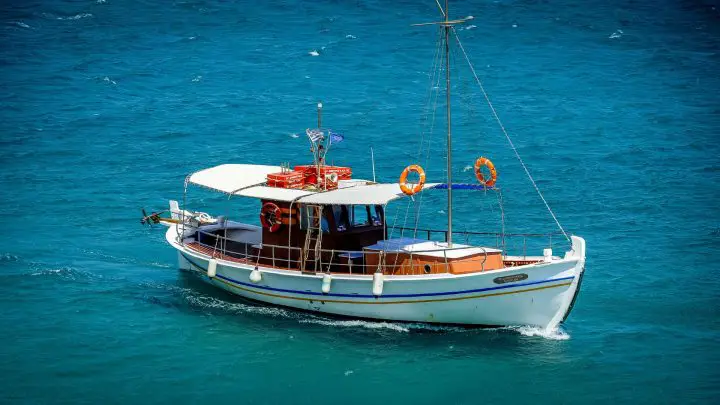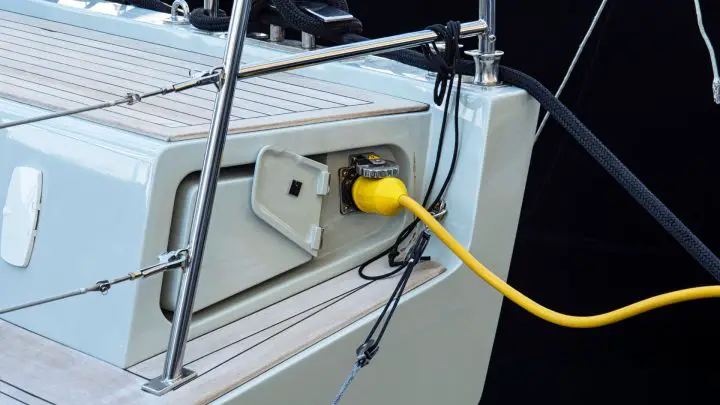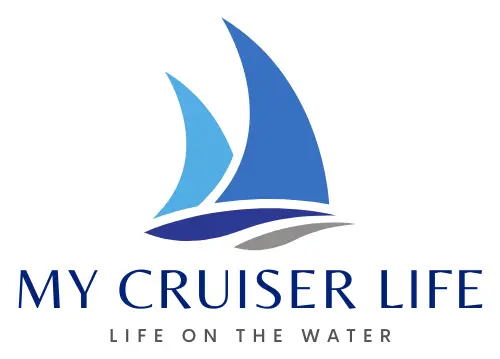Electric boat conversion transforms traditional gas or diesel-powered vessels into clean, quiet machines that run on battery power instead of fossil fuels. This sustainable boating solution eliminates exhaust emissions while delivering dramatically lower maintenance costs, whisper-quiet operation, and instant torque response.
Electric boat conversion has become increasingly accessible with manufacturers offering comprehensive component matrices, including over 60 battery models and specialized marine chargers. The process works for various vessel types, from 25-foot sailboats to larger cruisers, making clean propulsion available to most boat owners.
Ready to explore electric boat conversion for your vessel? Read on to discover the complete process, costs, and benefits in this comprehensive guide.

Table of Contents
- Why Convert to Electric?
- Choosing the Right Electric Motor
- Types of Boats Suitable for Conversion
- Core Components of an Electric Conversion
- Electric Boat Conversion Process: Step-by-Step
- Costs of Electric Conversion
- Ready to Make the Electric Switch?
Why Convert to Electric?
Environmental Impact That Actually Matters
Let’s cut to the chase—traditional boat engines are environmental disasters on a small scale. Electric outboard motors are a breath of fresh air, literally. They eliminate exhaust emissions, contributing to cleaner air by preventing the release of harmful substances like carbon monoxide, nitrogen oxides, and hydrocarbons that gas engines pump directly into the air you and your family breathe.
But it’s not just about the air. These motors improve water quality as they operate without fuel and minimal oil, significantly reducing the chances of water pollution. Think about it: no more worrying about fuel spills when you’re filling up, no oil leaks creating rainbow slicks behind your boat. The Paris Trocadéro is the first sightseeing cruise boat to be converted into an all-electric vessel, and they’re estimating a saving of 460 tonnes of carbon dioxide equivalent per year from just one boat conversion.
Cost Savings That Add Up Fast
Here’s where electric conversion gets really interesting from a wallet perspective. Electric boat motors are simpler in design and feature fewer moving parts than internal combustion motors, eliminating the need for oil changes or spark plug replacements. We’re talking about systems with maybe a dozen moving parts compared to hundreds in a traditional engine.
Although the price for electric boats has dropped over the years as the technology improves and more competitors come into the market, the real savings show up over time. The average cost to fully charge an electric boat for a family outing typically ranges around $5 or $6 per day, compared to what you’d spend filling up a gas tank at marina prices. Those fuel savings alone can justify the conversion cost within a few seasons of heavy use.
Performance Benefits You’ll Feel Immediately
From the moment you push the throttle, electric motors display their superiority. They provide instant torque, leading to responsive acceleration and powerful performance from the get-go. No more waiting for your engine to warm up or dealing with temperamental cold starts.
The silence factor can’t be overstated. Unlike traditional fossil-fuel engines that create a constant rumble and roar, electric motors run smoothly and quietly, enhancing the serenity of your boating experience. You’ll actually be able to have conversations without shouting, hear wildlife around you, and enjoy the water sounds that drew you to boating in the first place.
Related: Electric Boat Motor: The Right Way to Power Your Boat?
Choosing the Right Electric Motor
Selecting the appropriate electric motor determines your conversion’s success and performance characteristics. Motor power requirements depend on boat size, weight, and intended use patterns. Small boats under 20 feet typically need 3-8 HP motors, while larger vessels may require 20-140 HP equivalent systems.
Brushless motors offer superior reliability and efficiency compared to brushed alternatives, featuring fewer moving parts and virtually maintenance-free operation. Look for motors meeting ABYC E-30 standards with 48V DC systems for optimal safety and performance. Key specifications include continuous power rating, peak power capability, and RPM range matching your propeller requirements.
Inboard versus outboard configurations each offer distinct advantages. Inboard motors integrate seamlessly with existing shaft drives and provide better weight distribution, while electric outboard motors offer easier installation and portability. Consider regenerative capability for sailboats, allowing the motor to function as a generator when sailing above 4.5 knots.
Motor cooling systems vary between air-cooled and water-cooled designs. Water-cooled motors handle higher continuous loads but require additional plumbing integration. Evaluate controller compatibility, as motor and controller must work together as matched systems. Professional consultation helps ensure proper motor sizing for your specific boat’s displacement, hull design, and performance expectations.

Types of Boats Suitable for Conversion
Sailboats
Sailboats make perfect candidates for electric conversion, and here’s why: they already rely on auxiliary power for maneuvering in and out of marinas and during calm periods. The typical electric propulsion system for a 10m, 6-tonne cruising yacht will usually be designed to provide around five to six hours of gentle cruising in fairly neutral currents at around 4 knots.
What makes sailboats particularly attractive for conversion is their regeneration capability. Nearly all electric motors used in marine propulsion can turn into a hydro-generator when your speed under sail goes above 4.5 knots or so, and the prop/motor is allowed to rotate in reverse. Essentially, your boat charges its own batteries while you’re sailing—pretty neat, right?
The Cal25 that I got several years ago as a ‘hand me down’ from some neighbors at our marina when they upgraded to a larger vessel shows how even older sailboats can be successfully converted. The owner replaced a troublesome diesel with an electric drive system, and the results speak for themselves.
Pontoon Boats and Small Cruisers
Pontoon boats are almost tailor-made for electric conversion. They’re typically used for leisurely cruising, have plenty of space for batteries, and their flat deck design makes installation relatively straightforward. Scott is an inveterate tinkerer, so he got the idea of converting the pontoon to electric drive. He went and bought what he describes as ‘a golf cart motor on steroids’ and converted the outboard to electric.
The beauty of pontoon conversions is that you’re not fighting against hull design that demands high speeds. These boats are built for comfort and relaxation, which plays perfectly into electric propulsion’s strengths.
Fishing Boats and Small Powerboats
Electric motor power is measured in pounds (lbs) or kilowatts (kW), with electric motors providing up to 8 hp, indicating suitability for calm water usage. For small fishing boats, especially those used in bass fishing or calm water environments, electric conversion offers huge advantages.
Many lakes now restrict or ban gas engines entirely, making electric conversion not just an option but a necessity. In fact, many lakes now allow only electric motors for boating, which has driven significant innovation in this space.
Larger Yachts and Cruisers
Don’t think electric conversion is limited to small boats. A 40-foot Naptha Launch is an elegant repowering platform, and with the right system design, larger vessels can be successfully converted. The ePropulsion H-100 electric inboard motor provides 140 HP equivalent power, suitable for larger sailing boats and motor vessels between 60 to 100′ (18-30m) with a full displacement of up to 200 tons.
The key with larger boats is understanding that you’re not trying to maintain the same high-speed performance of the original gas setup. Instead, you’re optimizing for efficient cruising and the unique benefits that electric propulsion provides.
Core Components of an Electric Conversion
Electric Motors
Your motor choice makes or breaks the entire conversion. Look for one that meets ABYC standards at a safe 48Vdc low voltage. This should include components such as a key switch, neutral locking throttle, and a battery monitor display indicating state of charge, voltage, motor speed, and power consumption.
There are essentially two types you’ll encounter: brushed and brushless motors. Brushless motors cost more upfront but last longer and require virtually no maintenance. Electric BLDC motors are not inherently silent, but they can be. That’s why we offer motors that are significantly quieter than their traditional counterparts, with reduced vibrations—all without sacrificing performance.
Battery Banks
Here’s where things get expensive, but also where the technology has improved dramatically. The modern LiFePO4 battery is not only efficient but also cost-effective, thanks to its greatly increased usable capacity. For example, the E-Series battery only costs about $0.5 per watt-hour.
Lithium-ion batteries are a popular choice due to their efficiency, long lifespan, and lighter weight. A baseline for battery size can be a 1:1 ratio between kW of engine power to kWh of battery capacity, with scalability for expansion, particularly for LiFePO batteries.
Weight matters more than you might think. Traditional lead-acid batteries would require massive banks to provide a reasonable range, but modern lithium systems deliver the same energy in a fraction of the space and weight.
Controllers and Management Systems
The motor controller is like the brain of your electric system. It manages power delivery, protects against overloads, and provides the interface between your throttle input and motor output. Modern controllers are incredibly sophisticated, offering features like regenerative braking and programmable power curves.
Battery management systems (BMS) protect your investment by monitoring individual cell voltages, temperatures, and overall pack health. This isn’t optional equipment—it’s essential for safety and longevity.
Charging Systems
12V/16V Waterproof AC-DC Charger (December 17, 2024) – Featuring IP65-rated protection, dual-voltage switching, and 10A fast charging, it powers both 12V conventional batteries and 16V fish finder batteries with one device. Modern chargers are smart devices that can optimize charging based on battery chemistry and conditions.
You’ll want both onboard charging capability for shore power connections and potentially portable charging options for remote locations. Solar charging has become increasingly practical as panel efficiency has improved and costs have dropped.
Related: Picking the Best Boat for River Fishing – 6 Choices for Every River Angler
Electric Boat Conversion Process: Step-by-Step
- Planning Phase: Measure Twice, Cut Once
The first step in the conversion process is assessing your boat’s needs. The power of the electric motor should be enough to handle heavy seas or wind gusts, balanced with considerations of battery size and cost.
Start by honestly evaluating how you actually use your boat. Are you a weekend lake cruiser who rarely ventures more than 10 miles from the dock? Or do you take extended coastal trips? This determines everything else about your system design.
Document your current setup thoroughly. Take photos of the engine compartment, measure available space for batteries, and understand your existing electrical system. Keep in mind that propeller efficiency and mechanical and motor controller losses can result in less than half of the consumed power being used for actual propulsion.
- Removing the Old Engine
This is where things get real. Converting a traditionally powered boat to electric propulsion involves several preliminary steps and careful consideration of your vessel’s needs as well as your own boating style.
You’ll need to safely remove fuel systems, disconnect drive components, and prepare the engine bay for your new electric setup. Save the propeller shaft and stern tube if they’re in good condition—many electric conversions can reuse existing drive components.
- Installing the Electric Motor
Shaft drive – In most cases, it’s possible to retain the shaft and stern gland from an existing shaft drive ICE system, although you’ll probably need a new shaft bearing and coupler unless it is a direct-drive system.
Motor mounting is critical. Electric motors produce different vibration patterns than gas engines, and proper alignment is essential for smooth operation and long component life. Our DIY electric sailboat kits are relatively easy to install on your own, but do require you to have mechanical ability and basic electrical knowledge, as well as a voltmeter and other common tools.
- Battery Installation and Wiring
Battery placement affects your boat’s balance and safety. Lithium batteries are more forgiving about mounting orientation than traditional batteries, but they still need proper ventilation and protection from moisture.
Ensuring compatibility of the battery bank with all the connections, wiring, switches, appliances, electronics, and safety systems in your boat is necessary. This isn’t just about making connections work—it’s about integrating the electric system with your existing boat systems safely and efficiently.
- Testing and Commissioning
Don’t rush this phase. Start with dock testing before hitting the water. Verify all systems are working correctly, check for proper charging function, and ensure all safety systems are operational.
DIY fitting of the EcoDrive system is straightforward, and in most instances, the existing stern gear can be retained, but professional installation ensures everything is done to safety standards.
Costs of Electric Conversion
Basic electric conversion kits start at $2,950 for smaller boats, with complete systems including 2.2kW electric inboard, 24V battery bank, and charger available for $4,999. Typical 25-30 foot sailboat or powerboat conversions range from $15,000-$30,000 for quality systems, with battery banks representing 40-60% of total costs.
Component pricing varies significantly based on power requirements and range expectations. Small boat conversions under 3kW cost $3,000-$8,000, while larger vessel conversions can reach $100,000 for high-performance systems. LiFePO4 batteries cost approximately $0.50 per watt-hour, making energy storage the primary cost factor in system design.
Long-term operational savings offset initial investment costs. Daily charging expenses average $5-6 compared to marina fuel costs, while maintenance requirements drop dramatically without oil changes, spark plugs, or engine servicing. Commercial operators report 85-90% operational cost reductions, with recreational users saving hundreds annually on fuel and maintenance.
Government incentives reduce conversion costs in many regions. European markets offer tax rebates up to 30%, while US incentives include grants and tax credits for marine electrification projects. Local authorities in environmentally sensitive areas may provide additional rebates for electric conversions.
Financing options include marine loans specifically for electric propulsion upgrades and equipment financing through conversion kit suppliers. Some manufacturers offer installation services with extended warranties, spreading costs over longer payment periods while ensuring professional installation quality.
Ready to Make the Electric Switch?
Electric boat conversion delivers immediate benefits: zero emissions, dramatically reduced maintenance, whisper-quiet operation, and instant torque response that traditional engines can’t match.
With conversion costs from $2,950 to $30,000, the financial math works—daily charging costs of $5-6 versus marina fuel prices create compelling ROI within seasons. Modern LiFePO4 batteries, brushless motors meeting ABYC standards, and streamlined installation processes make electric conversion accessible for DIY enthusiasts and professionals alike.
Government incentives offering up to 30% tax rebates reduce barriers further. Your boat’s transformation to clean, quiet electric power isn’t just possible—it’s practical, profitable, and ready to deliver the superior boating experience you’ve been searching for.
